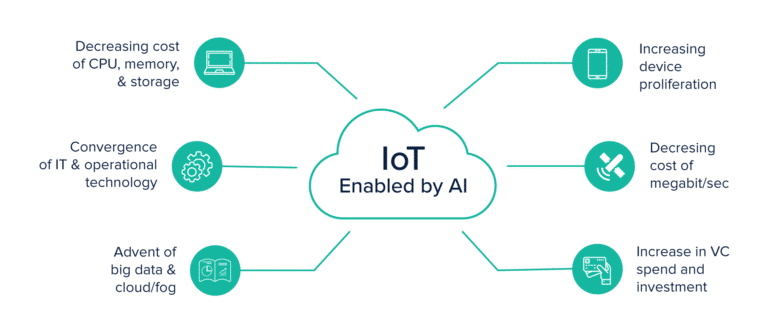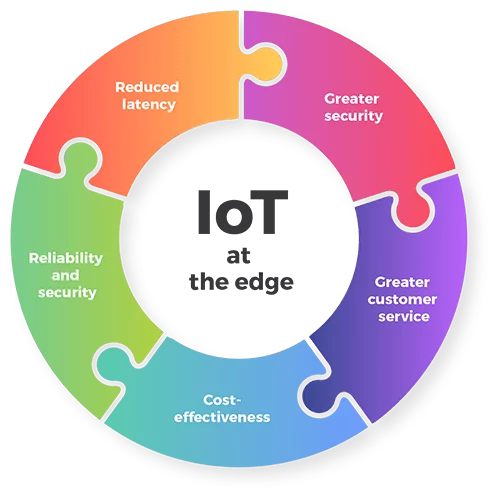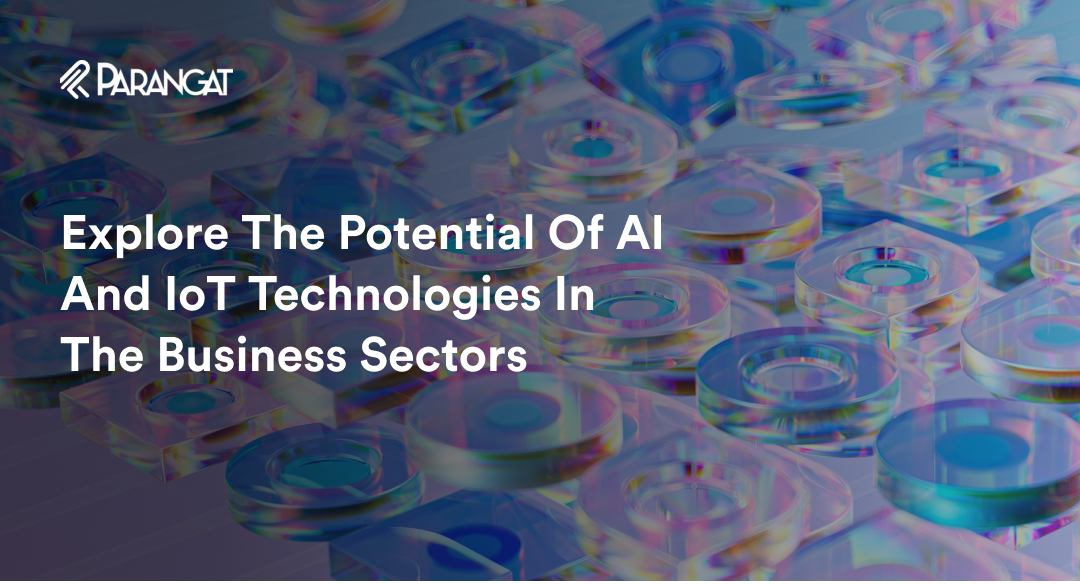AI and IoT are two of the newest and trending technologies reshaping the business landscape. Companies are starting to use these new technologies as they try to stay competitive and examine how they can boost their bottom line.
No wonder the Internet of Things (IoT) and artificial intelligence (AI) are robust technologies on their own; they work best together to help businesses undergo meaningful digital transformation. IoT, the term for integrating these two technologies, has the power to upend entire sectors.
By 2023, the market for AI and IoT is predicted to reach several billion dollars, according to ResearchAndMarkets.com.
Let’s know in detail about the benefits of AI and IoT for your business.
AI and IoT are two potent forces transforming how you conduct business.
IoT and AI are potent forces that will alter how you conduct business. Machine learning and IoT both mean the ability to automate different business operations. They could enable you to conserve time, cash, and resources.
The ability of computers to learn from data and make judgments based on it is known as artificial intelligence (AI). It plays a significant role in operating smartphones, self-driving cars, and computers that can interpret text from papers or any other source, including your body language or speech. Aside from these areas, AI is also applied in retail sales, healthcare, and financial services.

The term “Internet of Things” (IoT) describes how technological networks link actual physical objects to one another and the Internet. This covers everything, from automobiles to home furnishings to security cameras. However, it also includes smart gadgets like home assistants like Alexa and Google Home that let you book restaurant reservations or manage your schedule with a button. Since they can connect to your phone and stream movies and games directly from Netflix or Hulu without any additional hardware, smart TVs have been in the news for years.
Although these two technologies are frequently considered rivals, they function best when united. IoT allows businesses to communicate with customers, while AI gives them access to new data processing methods.
Where does IoT meet AI?
The Internet of Things (IoT) is a network of connected digital and mechanical devices, computing equipment, and sensors frequently integrated into everyday objects and convey data. IoT links the Internet to any physical thing or location in the globe.
Today’s Internet of Things (IoT) goes beyond the simple fusion of microelectromechanical systems, including wireless technologies and speedier data transmission across the Internet. Information technology and artificial intelligence came together. As a result, they are enabling unstructured machine-generated data to be assessed for insights that may lead to breakthroughs.
The usage of IoT is growing rapidly by an increasing number of industries to operate more effectively, deliver better customer service, increase the significance of their businesses, and apply sound decision-making.
By consuming audio, video, and image content, machine learning for IoT can use to spot abnormalities, foresee new patterns, and increase intelligence. The application of machine learning in the Internet of Things (IoT) can replace human procedures and provide automated systems with actions that get support from statistics in crucial activities.
Let’s know the stats and figures related to AI and IoT-
- Business executives who said they are adept at using big data to solve problems or develop insights make up 95% of those who also employ AI technologies.
- According to 32% (the highest reply percentage) of respondents who employ big data technology, voice recognition, and response solutions are the most extensively utilized AI solutions in enterprises.
- Only half of the largest organizations (those with at least 100,000 people) have an AI strategy, despite this being the group most likely to do so.
- Grand View Research predicts that by 2025, the worldwide IoT healthcare market will be worth $534.3 billion.
- According to the recent report by NETSCOUT Threat Intelligence, Usually, five minutes after an IoT gadget connects to the Internet, it is attacked.
So, these are some of the most verified stats and figures by popular surveying companies about AI and IoT. These stats clearly explain how AI and IoT will positively affect businesses.
The Benefits of IoT in AI-
Leading companies like Amazon, Netflix, and Microsoft continuously apply the advanced technologies of AI and IoT in their business and get huge benefits.

While AI and IoT each bring their unique contributions to the digital revolution, combining them offers businesses more significant advantages. Here, we will examine some of the top benefits that IoT offers to AI applications:
-
IoT data for business purposes
IoT can also refer to a data warehouse. This statement means combining IoT data can extract relevant data-driven feedback, which can help efficient decision-making when applied. Additionally, businesses can find new market opportunities by utilizing IoT data rather than IoT itself. Additionally, because IoT gives companies access to more data and, consequently, more sophisticated analytics of that data, its use may ultimately lead to better customer outcomes and improved service delivery.
“According to McKinsey, 82% of businesses that have adopted AI and machine learning have seen a return on their investments.”
-
Cost and time savings
Most businesses are under enormous pressure to reduce expenses without sacrificing productivity in light of COVID-19. IoT and AI may offer a way for companies to cut costs. To evaluate whether a part or method has become too expensive to maintain, AI and IoT can quickly collect and analyze data. The collection of various data enables efficiency improvements, generates a financial surplus, and results in low-cost materials.
-
Task automation and reduction of human intervention
Today, internet-connected devices can be found in all facets of our life, and it is safe to argue that they simplify jobs. Most of these automation capabilities only require a single button push, ranging from real-time AI chatbots to home automation control systems.
Pipeline automation can also lead to similar gains for companies that provide AI-enabled solutions. Significant reductions in QA and annotation time are part of this. Through SuperAnnotate’s platform, hundreds of businesses experienced increased task completion speed and forecast accuracy.
-
Higher quality of life
Some of the most popular ways IoT improves people’s quality of life and makes it more sustainable include smart cities and agriculture, intelligent homes, and food waste reduction techniques.
Challenges of IoT in AI-
Despite its many advantages and breakthroughs, IoT has a few restrictions. Following is a list of some of them:
-
Privacy Issues
More information is shared between them due to greater connectivity between different devices or their coexistence for model development, which puts your data at risk and calls for prudence. Additional layers of security are required to guard against dangers such as the potential of data leakage.

-
Data Overflow
Collecting and systematically handling all the data from these IoT devices will be part of the solution organizations must eventually find to deal with the vast number of IoT devices. Properly using data lakes and warehouses, tight governance, and logical dataset organization will precede all other considerations.
Join the hundreds of top firms using Super Annotate’s user-friendly data curation and robust project management capabilities to create exceptionally high-quality training data up to 5 times faster.
-
Bug issues
There is a good likelihood that every other connected device will have a flaw if one IoT device has one in its system.
-
Issues of compatibility
It is more difficult for various devices to communicate with one another due to the need for global IoT interoperability standards.
Why implement machine learning in IoT?
To develop analytical abilities on a wide range of use cases, more and more firms are merging IoT with machine learning initiatives. This enables their enterprises to acquire new insights and embrace cutting-edge automation. They can benefit from the following by applying machine learning for IoT:
- Transform data into a readable format.
- Set up the machine learning model on the device, the edge, and the cloud.
- Enable the direct use of data on edge devices for complicated decision-making.
IoT applications for AI-
Although we have informed you about the fundamentals of IoT, its implications for AI are more complicated. Many businesses embrace IoT because it enables them to take a cutting-edge approach to expanding and progressing their business. Organizations can create and implement more robust risk management strategies thanks to new IoT applications. The following are some of the more widespread applications of IoT in AI:
-
Transport logistics
IoT enhances the automatic identification and worldwide location of goods and expands the material flow systems in transport logistics. Additionally, it improves energy efficiency, leading to decreased energy usage.
-
Smart cities
Although the definition of a “smart city” is still evolving, it mainly refers to a metropolitan area supporting high living standards and sustainable growth. The model developed by Giffinger et al. describes the characteristics of a smart city, including its populace, administration, economics, and way of life.
-
E-health control
Control and prevention with e-health are the two critical goals of future healthcare. Even if they do not reside in the same nation or location, anyone can opt to have their health examined by doctors nowadays. IoT-assisted e-health is quite helpful for tracking and monitoring people’s health histories. The professionals may also gain from IoT healthcare solutions since they can gather data to boost their scientific calculations.
Key takeaways-
Since its inception, IoT, particularly AI-enabled IoT as described, has improved our daily lives and guided us to work more efficiently while giving us total control over the process. IoT devices can be crucial for offering insights and a real look at systems for organizations and having smart appliances to upgrade households. IoT will advance as more businesses become aware of its practical applications and advantages.
Please request a free 60-minute consultation with one of our professionals anytime. We’ll discuss the possibilities and address any worries you might have. Our advisors will make recommendations and describe how to put them into practice.
Let’s talk!
An excellent place to begin is with Parangat Technologies!

With roll up sleeves, dive in and get the job done approach, it was in the year 2010 when Sahil started Parangat Technologies. Emphasizing a healthy work culture and technology-driven company, he has successfully created a workplace where people love to work and live. He is a software engineer and a passionate blockchain enthusiast.


 +44-7511-112566
+44-7511-112566 +353-1-8079571
+353-1-8079571 +1-415-799-9792
+1-415-799-9792

